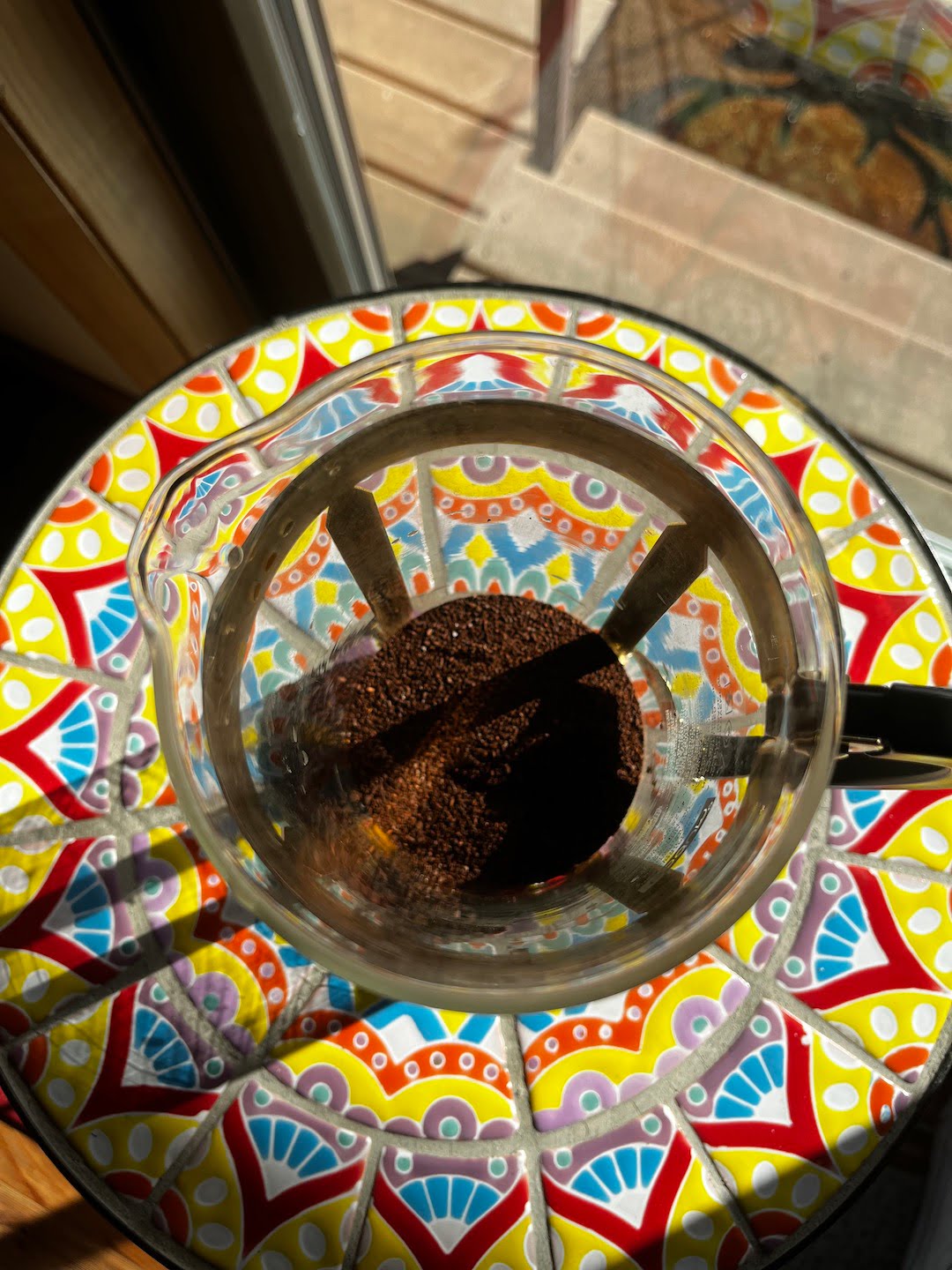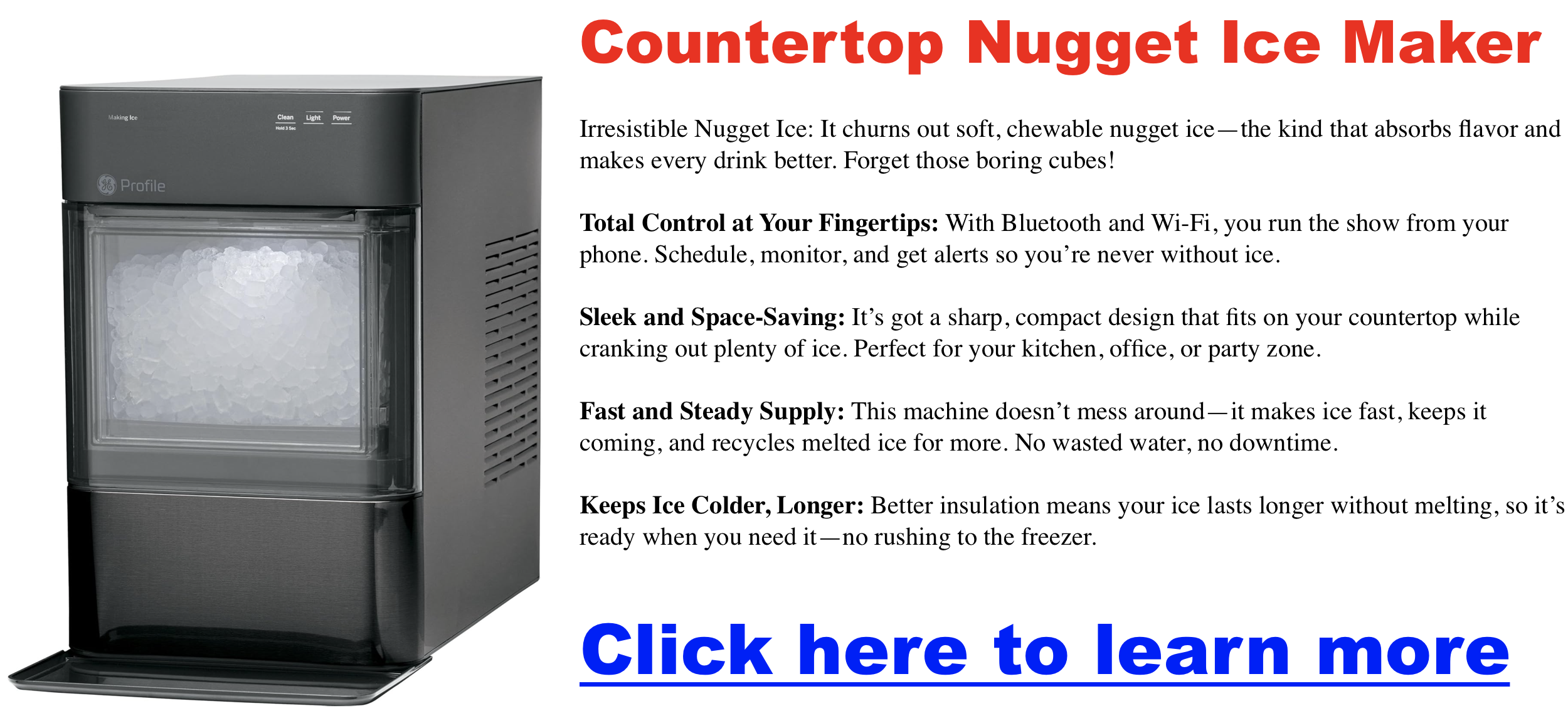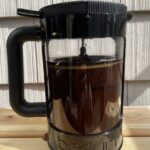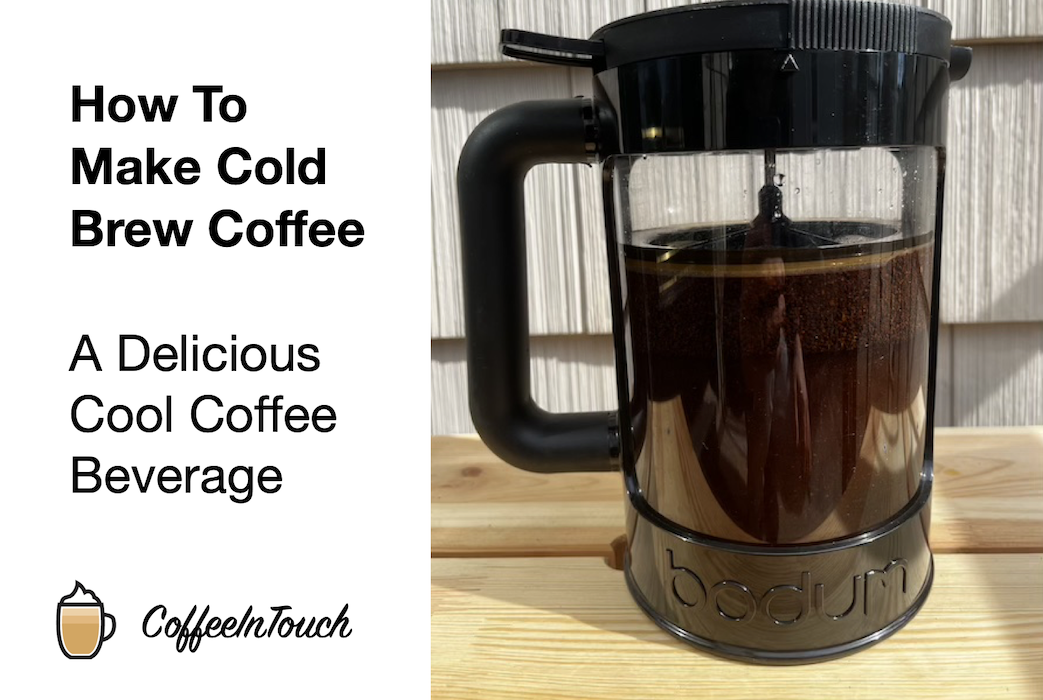Categories
How To Make French Press Coffee
Look, coffee is a personal journey. Feel free to play with:
- Grind Size: You might need to adjust the coarseness if your coffee tastes like a rejected demo tape.
- Water Temperature: Aim for hot, but not boiling. You don’t want to scald the rockstar.
- Steeping Time: More time = stronger coffee. But don’t overdo it unless you want to go from Led Zeppelin to Death Metal in a sip.
Alright, here’s the deal on brewing. French Press coffee needs a little extra time to shine – around 4 minutes. And don’t forget to use water just off the boil, around 195-205°F (or 90-96°C). Let that coffee magic happen!
French Press Coffee Ratio
The coffee-to-water ratio for French press coffee is typically around 1:15. For every 1 gram of coffee, you will use 15 grams of water.
To make a cup of French press coffee, you will need about 8 ounces (240 ml) of water and about 2 tablespoons (10 grams) of coarsely ground coffee. You can adjust the amount of coffee and water to taste. Some people prefer a stronger coffee, so they may use more coffee, while others prefer a weaker coffee and use less. If you need a French press, I like Bodum.
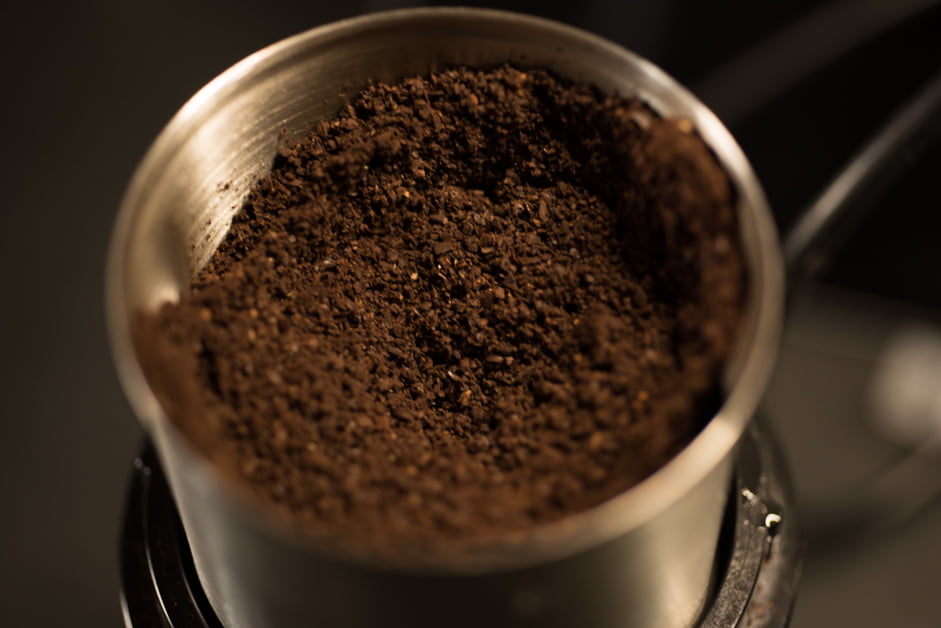
How To Use a French Press
I’m using a 34 ounce Bodum French Press which really holds about 32 ounces of water.
1: Begin heating 4 cups of filtered water. Ideal temperature is 195-205 degrees F.
2: Measure or weigh about 64 grams / 12 Tbsp of coffee. Add to the French press.
If you like a slightly weaker coffee, use 10 tbsp. If you like a stronger coffee, try 16 tbsp.
3: When the water boils, remove it from the heat and let it cool for 30 seconds. Add enough water to the French press to bloom the coffee. This will give the water a chance to extract the coffee’s oils for maximum flavor. Set a 30-second timer.
4: Continue to add water and fill the carafe. Cover and set a 4-minute timer.
5: Press down the plunger to push the ground to the bottom of the carafe. Take it slow. Pushing hard and fast will only negatively impact the flavor.
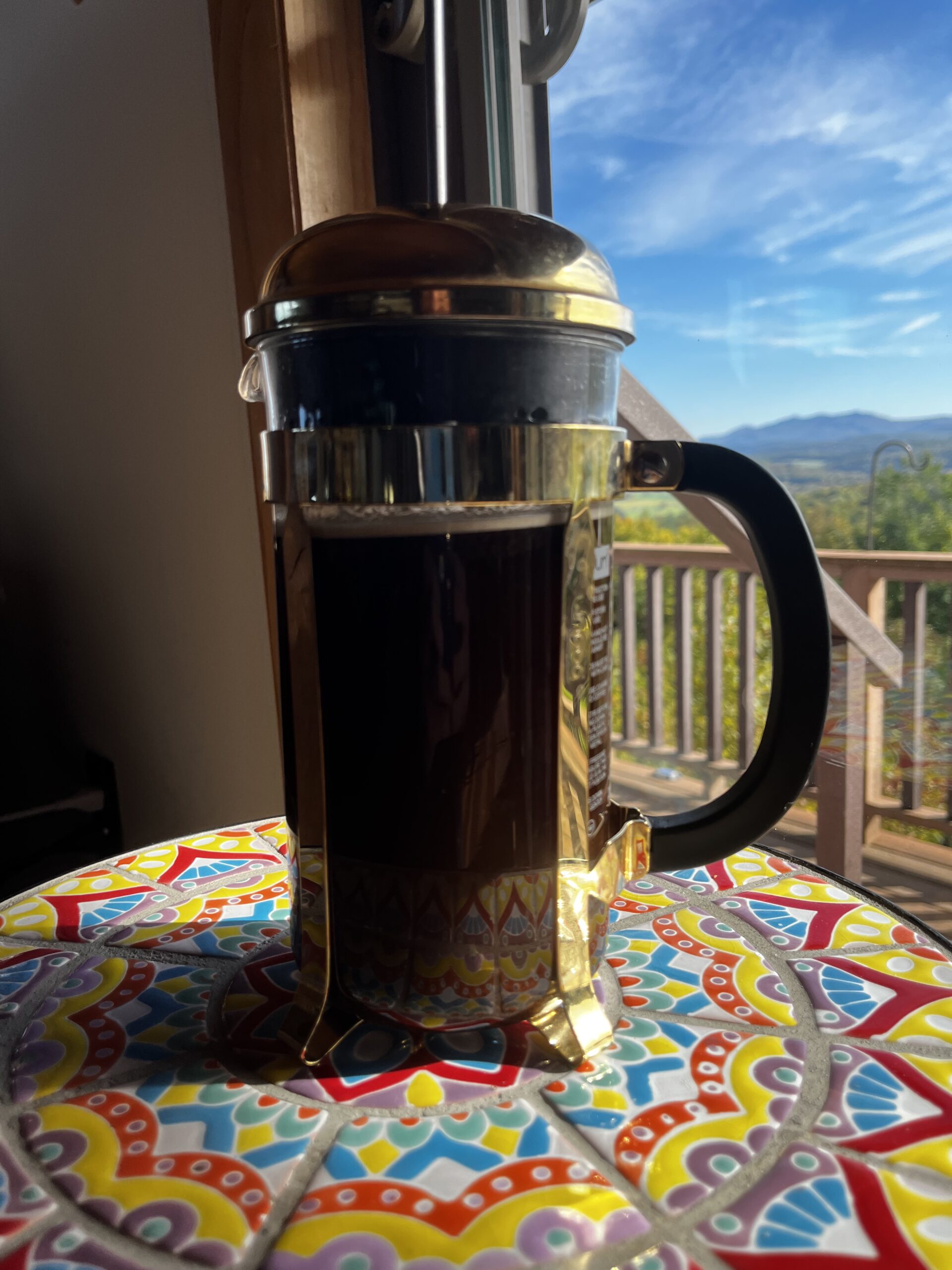
Coffee To Milk Ratio Chart
| Coffee Drink | Coffee (Espresso or Regular) | Milk Ratio | Foam | Water | Other Components |
|---|---|---|---|---|---|
| Espresso | 1 shot (30ml) | None | None | None | None |
| Ristretto | 1 short shot (15-20ml) | None | None | None | None |
| Lungo | 1 long shot (60ml) | None | None | None | None |
| Americano | 1 shot (30ml) | None | None | Hot, to taste | None |
| Cappuccino | 1 shot (30ml) | Equal part | Equal part | None | None |
| Latte | 1 shot (30ml) | 3 parts | Thin layer | None | None |
| Flat White | 1-2 shots (30-60ml) | 2 parts | None | None | None |
| Macchiato | 1 shot (30ml) | A dollop | None | None | None |
| Mocha | 1 shot (30ml) | 2 parts | Optional | None | Chocolate syrup |
| Cortado | 1 shot (30ml) | Equal part | None | None | None |
| Affogato | 1 shot (30ml) | None | None | None | Vanilla ice cream |
| Red Eye | Regular coffee | None | None | None | 1 shot of espresso |
| Black Eye | Regular coffee | None | None | None | 2 shots of espresso |
| Doppio | 2 shots (60ml) | None | None | None | None |
| Irish Coffee | Regular coffee | None | Cream top | None | Irish whiskey, sugar |
| Espresso con Panna | 1 shot (30ml) | None | None | None | Whipped cream |
| Espresso Romano | 1 shot (30ml) | None | None | None | Lemon slice |
| Piccolo Latte | 1 ristretto shot (15-20ml) | 1 part | None | None | None |
| Regular Coffee | Brewed coffee (240ml) | To preference | None | None | Optional sweeteners |
Prime Day Kitchen Speakers For The Ultimate Coffee Station
Tired of mediocre sound? Elevate your coffee making audio experience with the best speakers of Prime Day 2024! If you’re looking for the Best Prime Day Deals CLICK HERE. Whether you’re a music aficionado, a movie buff, or simply enjoy listening to podcasts while making coffee, the right speaker can make all the difference. In this comprehensive guide, we’ll delve into the top-rated speakers across various categories, from portable powerhouses to smart home audio companions.
Best Overall Speakers
Click here for my favorite Prime Day speaker deal
These speakers reign supreme in sound quality, design, and features, making them the perfect choice for discerning listeners:
- Sonos Era 300: Immerse yourself in spatial audio with Dolby Atmos, making this speaker ideal for both music and home theater. Its six drivers create a wider, more immersive soundstage, while voice control and Wi-Fi connectivity add convenience.
- Bowers & Wilkins Zeppelin: A timeless icon reimagined with enhanced audio performance and connectivity. The updated drivers and larger subwoofer deliver richer, more detailed sound. Its sleek design and wide range of connectivity options make it a statement piece for any home.
- KEF LS60 Wireless: A revolutionary design combining sleek aesthetics with outstanding acoustics. Featuring KEF’s Uni-Q driver array and Metamaterial Absorption Technology (MAT), these floorstanding speakers deliver exceptional sound quality and reduced distortion.
Best Portable Speakers
Click here for the Prime Day portable speaker deal of the day
Take your music on the go with these compact yet powerful speakers:
- Ultimate Ears BOOM 3: This rugged and waterproof speaker delivers 360-degree sound, perfect for outdoor gatherings or poolside parties. Its long battery life and durable design make it a reliable companion for any adventure.
- JBL Flip 6: An affordable and durable speaker with impressive bass, the JBL Flip 6 is a popular choice for casual listeners. Its compact size and PartyBoost feature, which allows you to connect multiple JBL speakers, make it perfect for social gatherings.
- Sony SRS-XB13: Don’t be fooled by its small size. The Sony SRS-XB13 packs a punch with surprisingly big sound and long battery life. Its IP67 water- and dust-proof rating makes it ideal for outdoor use.
Best Budget-Friendly Speakers
Great sound doesn’t have to break the bank:
- Anker Soundcore Flare 2: This stylish speaker features LED lights that pulse to the beat of your music, adding a fun element to your listening experience. It also offers customizable sound through the Soundcore app.
- Tribit Stormbox Micro 2: Despite its compact size and affordable price, the Tribit Stormbox Micro 2 delivers surprisingly good sound quality. It’s also waterproof and dustproof, making it a great option for outdoor adventures.
- OontZ Angle 3 Ultra: This small but mighty speaker is perfect for outdoor use, thanks to its water-resistant design and powerful sound. It’s a great value for the price.
Best Smart Speakers
Click here for the best Prime Day smart speaker deal
Combine audio excellence with the convenience of voice control:
- Amazon Echo Studio: This speaker boasts immersive 3D audio and seamless integration with Amazon Alexa. It’s perfect for music lovers and smart home enthusiasts alike.
- Google Nest Audio: With its crystal-clear sound and access to Google Assistant, the Nest Audio is a versatile smart speaker that can answer questions, control smart home devices, and play your favorite tunes.
- Apple HomePod mini: This compact smart speaker offers surprisingly good sound quality and seamlessly integrates with other Apple devices. It’s a great choice for those invested in the Apple ecosystem.
Best Speakers for Open Concept Kitchens Near Big Screen TVs
Click here for the Prime Day deal on my favorite subwoofer
Create a cinematic audio experience in your kitchen & living room.
- Sonos Arc: This premium soundbar delivers immersive Dolby Atmos surround sound for a truly cinematic experience. Its sleek design and Wi-Fi connectivity make it a great addition to any home theater setup.
- Samsung HW-Q990B: This powerful soundbar comes with dedicated rear speakers and a subwoofer for a complete surround sound experience. It supports Dolby Atmos and DTS:X for immersive audio.
- Klipsch Reference Premiere Dolby Atmos System: This complete home theater setup includes floorstanding speakers, a center channel speaker, surround speakers, and a subwoofer. It delivers powerful and detailed sound for a truly immersive cinematic experience.
Conclusion
Choosing the perfect speaker is a personal journey. Consider your budget, listening habits, and desired features before making a decision. Whether you opt for a portable companion, a smart home hub, or a home theater powerhouse, the best speakers of 2024 offer something for everyone. Happy listening!
Espresso Martini Making
If you’re a fan of coffee and cocktails, the Espresso Martini is the perfect drink to indulge your senses. This delicious concoction combines the energizing kick of espresso with the smooth sophistication of vodka and coffee liqueur. It’s no wonder that the Espresso Martini has experienced a surge in popularity in recent years, captivating cocktail enthusiasts worldwide.
In this blog post, we’ll dive into the fascinating history of the Espresso Martini, share the perfect recipe for you to recreate at home, offer tips on crafting the ideal espresso shot, and explore some exciting variations for those who crave a twist on the classic.
A Brief History of the Espresso Martini
The Espresso Martini came about in the 1980s at the Fred’s Club in London, thanks to the ingenious bartender Dick Bradsell. Legend has it that a famous model requested a drink to “wake her up and then f*ck her up.” Bradsell’s response was the Espresso Martini, a bold and invigorating combination that quickly became a sensation.
Since then, the Espresso Martini has solidified its place as a modern classic cocktail, gracing the menus of trendy bars and restaurants across the globe. Its unique blend of flavors and stimulating effects have made it a favorite among coffee lovers and cocktail aficionados alike.
The Perfect Espresso Martini Recipe
Click here for my favorite affordable espresso machine
Ready to try your hand at making an Espresso Martini? Here’s the recipe for perfection:
Ingredients:
- 2 ounces vodka
- 1 ounce coffee liqueur (Kahlúa, Tia Maria, or Mr. Black are excellent choices)
- 1 ounce freshly brewed espresso, cooled
- 1/4 ounce simple syrup (optional, adjust to taste)
- 3 coffee beans for garnish
Instructions:
- Chill a martini glass.
- Fill a cocktail shaker with ice.
- Add the vodka, coffee liqueur, espresso, and simple syrup (if using) to the shaker.
- Shake vigorously for about 15-20 seconds.
- Strain into the chilled martini glass.
- Garnish with three coffee beans.
Pro Tip: For extra elegance, try creating latte art with the foam on top of your Espresso Martini.
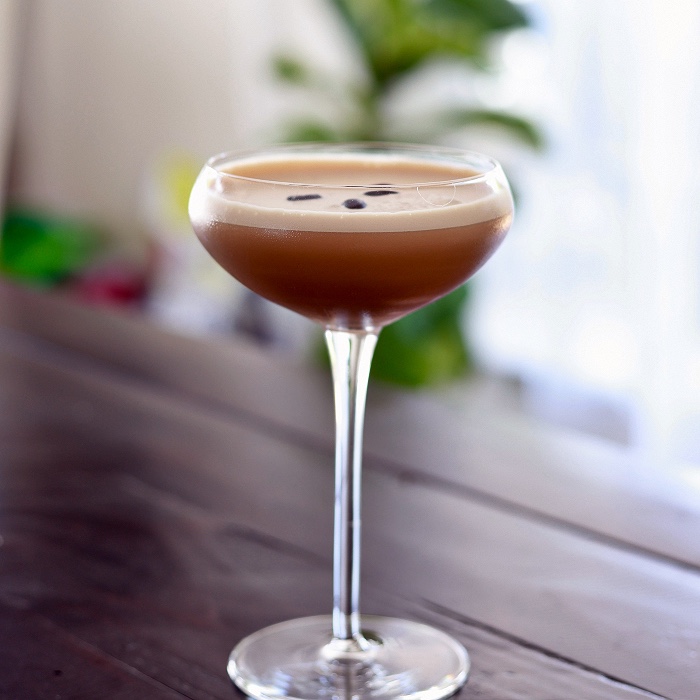
Crafting the Ideal Espresso Shot
- Espresso Beans: Use freshly roasted, high-quality espresso beans for the best flavor.
- Grind Size: Grind the beans to a fine consistency, similar to table salt.
- Espresso Machine: Invest in a good espresso machine that can generate consistent pressure and temperature. Look for features like a PID controller, pre-infusion, and a powerful steam wand.
- Brew Time: Aim for a brewing time of 25-30 seconds for a single shot.
Espresso Martini Variations
Once you’ve mastered the classic recipe, feel free to experiment with these delicious variations:
- Vodka Variations: Try using different brands of vodka or flavored vodkas for a unique twist.
- Coffee Liqueur Variations: Explore other coffee liqueurs like Tia Maria, Mr. Black, or Sheridan’s.
- Flavored Espresso Martinis: Add a dash of vanilla extract, chocolate liqueur, or caramel syrup for extra depth of flavor.
- Citrusy Twist: Incorporate a splash of orange bitters for a refreshing citrusy note.
How to Get Ice That Stays Frozen Longer Without the Hassle
When you’re in the market for a countertop ice maker, you may have encountered one common problem: most models don’t keep the ice frozen. Ice that melts quickly can be frustrating, especially when hosting a gathering or preparing drinks for the day. In this guide, we’ll dive into what you should know when looking for a countertop ice maker that produces ice and preserves it well below the freezing point.
What’s the Difference Between a Basic Ice Maker and One That Keeps Ice Frozen?
The main distinction between a basic ice maker and a model that preserves ice lies in their design and purpose. Basic ice makers are compact machines that focus solely on ice production. Once the ice is made, it sits in a storage bin without any real insulation or freezing capability, which causes the ice to melt quickly. Melted ice is often recycled into the system to make more ice, but you’re left with soft or slushy cubes that don’t last long in a drink.
In contrast, freezer-equipped ice makers have an insulated compartment or a mini freezer section designed to keep ice frozen after it’s made. These models can maintain a temperature below freezing, allowing your ice to last significantly longer.
Why Most Countertop Ice Makers Struggle With Ice Retention
Several design factors explain why typical countertop ice makers struggle to keep ice frozen:
- Minimal Insulation: Most countertop models are designed for speed and compactness, leaving little room for adequate insulation. The ice melts rapidly without sufficient insulation, especially in warmer ambient temperatures.
- Type of Ice: Many models produce bullet-shaped ice, which is softer and melts faster than traditional cube ice. This type of ice is often only held at around 32°F, just above freezing, which hastens melting.
- Recycling Melted Ice: While this is an environmentally friendly feature, recycling results in wet, slushy ice that doesn’t hold up well in drinks.
- Energy Efficiency Trade-off: Ice makers that maintain freezing temperatures require continuous power, increasing energy consumption. In contrast, basic models are more energy-efficient but sacrifice ice quality for lower power usage.
How Can You Improve Ice Retention in a Countertop Ice Maker?
Although most countertop ice makers aren’t built to keep ice frozen for long, there are strategies to improve ice longevity:
- Transfer Ice to a Freezer: Once the ice is made, moving it to a traditional freezer will ensure it stays solid for longer. Many users choose this workaround for events or extended use.
- Use Filtered Water: Filtered water reduces impurities and air bubbles in the ice, leading to denser ice that takes longer to melt.
- Choose Models with Better Insulation: A few models, like the NewAir ClearIce40 and GE Profile Opal Nugget Ice Maker, offer better insulation to help delay melting, though they still don’t provide freezing capabilities.
Top Models Known for Improved Ice Retention
While models that actively keep ice frozen are rare, there are a few countertop ice makers that perform better in terms of ice retention due to enhanced insulation:
- NewAir ClearIce40: This model is known for producing crystal-clear ice that lasts longer due to better insulation and cold storage capabilities.
- GE Profile Opal Nugget Ice Maker: Loved for its nugget-style ice, this model also includes superior insulation, allowing it to keep ice cold longer before melting.
Common Complaints and Solutions for Countertop Ice Makers
Users often report the following challenges when it comes to ice retention:
- Rapid Ice Melting: To counteract this, it’s best to transfer ice to a separate freezer as soon as it’s produced.
- Wet or Slushy Ice: Using filtered water and ensuring the unit is cool can help reduce this issue.
- Limited Storage Capacity: If you’re producing large amounts of ice, consider using a basic ice maker alongside a traditional freezer for better long-term storage.
Ice Shapes
- Nugget Ice:
- Nugget ice has taken the world by storm, and for good reason. Its soft, chewable texture makes it a delightful addition to any beverage, from cocktails to sodas. This type of ice is made by scraping thin layers of a cold cylinder, resulting in small, irregular nuggets that are easy to chew and slow to melt.
- Popular models: If you like nugget ice, consider the GE Profile Opal 2.0, Euhomy Nugget Ice Maker, or NewAir Nugget Countertop Ice Maker.
- Classic Cubes: Clear vs. Cloudy:
- Clear ice cubes are visually appealing and melt slower due to their dense structure, making them ideal for cocktails and whiskey. While perfectly functional, cloudy ice cubes contain air pockets that make them less dense and quicker to melt.
- If clear ice is a priority, look for machines like the Luma Comfort Clear Ice Cube Maker or Frigidaire Countertop Ice Maker.
- Gourmet Shapes:
- Some ice makers offer unique shapes, like large spheres or cubes, which can add a touch of elegance to drinks and help them stay cold longer.
- If you’re a cocktail enthusiast or enjoy entertaining, these options might be appealing.
Ice Maker Must-Haves
When shopping for a countertop ice maker, there are several factors to consider beyond just the brand name:
- Production Speed: How much ice do you need daily, and how quickly do you need it? Some machines can churn out a batch of ice in as little as 6 minutes, while others might take longer. Consider your household size and how often you entertain to determine your ideal production speed.
- Storage Capacity: Don’t want to constantly empty the ice bucket? Choose a model with a storage capacity that matches your ice consumption habits.
- Ice Size Options: Do you prefer a machine with adjustable ice size settings, or are you happy with a fixed size? Think about how you typically use ice and choose accordingly.
- Energy Efficiency: Select an energy-efficient model to help the environment and your wallet. For the most efficient options, look for ice makers with an Energy Star rating.
- Noise Level: If your ice maker will be in a living or sleeping area, noise level is an important consideration. Opt for a quieter model to avoid disruptions.
- Self-Cleaning Features: Some ice makers offer self-cleaning cycles, saving time and effort. However, it’s important to research these cycles’ effectiveness before deciding.
- Extra Perks: Some models have features like WiFi connectivity, timers, and built-in water filters. Consider which of these features are important to you and prioritize them accordingly.
Maintaining an Ice Maker
- Regular Deep Cleans: Even if your model boasts a self-cleaning cycle, regular deep cleans are crucial. Follow the manufacturer’s instructions, which typically involve using a vinegar solution or a specialized ice maker cleaner.
- Daily Wipe-Downs: After emptying the ice bin, give it a quick wipe-down with a damp cloth to prevent residue from drying and hardening. Don’t forget to wipe down the exterior and control panel as well.
- Descaling: Depending on your water hardness, you may need to descale your ice maker periodically to remove mineral buildup.
Troubleshooting Like a Pro:
- Leaks: If you notice any leaks, check the water lines and connections for any cracks or loose fittings.
- Jammed Ice Maker: If the ice maker jams, try turning the machine off and unplugging it for a few minutes. Then, gently remove any ice blockages with a plastic utensil (never use sharp objects).
- Slow Ice Production: Could be due to a variety of factors, such as low water pressure, a dirty filter, or a faulty thermostat.
Extending the Life of Your Ice Maker:
- Use Filtered Water: If you have hard water, using filtered water can significantly reduce mineral buildup and prolong the life of your ice maker.
- Don’t Overfill: Avoid overfilling the water reservoir, as this can put unnecessary strain on the components and lead to leaks.
- Regularly Check for Wear and Tear: Inspect hoses, gaskets, and look for signs of wear and tear, and replace them promptly if needed.
Conclusion: The Trade-Offs You Need to Consider
When selecting a countertop ice maker, it’s important to understand the trade-offs between energy efficiency, ice quality, and storage capability. Basic models are ideal for fast ice production and energy efficiency but fall short in keeping ice frozen. If ice longevity is a key concern, opting for models with better insulation, like the NewAir ClearIce40, or using a separate freezer for ice storage are practical solutions.
The Best Canned Coffee
Canned coffee is pre-brewed coffee that is packaged and sealed in a can for convenience. It is ready to drink, often chilled or at room temperature, and available in various styles and flavors. Canned coffee can range from black coffee and cold brew to flavored or sweetened options that may include milk, cream, or plant-based alternatives.
Here are our top picks for canned coffee.
HIGH Brew Coffee Cold Brew Coffee
High Brew Coffee offers a unique canned coffee option called Cold Brew Coffee + Protein, Black and Bold. It can be conveniently delivered to your home or office on Amazon.
Exploring Canned Coffee Brewing Techniques
Cold Brew Concentrate: Cold brew concentrate is fundamental to many canned coffee products. It steeps coarsely ground coffee beans in cold water for 12 to 24 hours. This method yields a smoother, less acidic, and naturally sweet coffee, making it perfect for those who enjoy a subtle and balanced flavor profile.
Nitro Infusion: Inspired by craft beer, nitro-infused canned coffee is an eye-catching option. The infusion of nitrogen gas creates a rich, creamy texture and a foamy head, adding a velvety, tactile experience to each sip. This method is ideal for those who appreciate a fuller, more indulgent coffee drink.
Espresso-Based Brews: Canned coffees that feature espresso are perfect for those who crave a bold, intense flavor. These brews start with a concentrated espresso shot, delivering a robust taste that’s invigorating and satisfying. Espresso-based options cater to consumers looking for a strong and energizing coffee experience.
Flash Brewing: Flash brewing involves brewing coffee hot and rapidly cooling it over ice to capture its full aroma and flavor. This technique results in a refreshing, aromatic canned coffee that bridges the gap between traditional hot brewing and cold coffee. It’s perfect for those who want the depth of hot-brewed coffee in a chilled form.
Innovative and Emerging Techniques: The canned coffee industry continues to push boundaries with new brewing methods and ideas. From adding unique ingredients to experimenting with different roast levels and brewing times, innovation is at the heart of this evolving market.
Starbucks Nitro Cold Brew
Starbucks Nitro Cold Brew offers a distinctive twist on traditional coffee. Infusing cold brew coffee with nitrogen achieves a smooth, velvety texture with a creamy layer of foam. This infusion process enhances the mouthfeel and imparts a natural sweetness.
Higher Caffeine Content: Nitro cold brew packs more caffeine than regular iced coffee, delivering a powerful energy boost.
Lower Calorie Option: When enjoyed without added flavors or syrups, it serves as a lower-calorie choice compared to many other Starbucks beverages.
Natural Sweetness: The nitrogen infusion lends a subtle sweetness.
 Starbucks Espresso and Cream Light
Starbucks Espresso and Cream Light
This convenient, ready-to-drink coffee from Starbucks pairs bold, rich espresso with just the right amount of cream. Each 6.5 oz can contains 120 mg of caffeine and only 70 calories, making it an ideal choice for coffee enthusiasts looking for a quick pick-me-up. Perfect for enjoying at home, at work, or on the go, it offers a smooth and satisfying coffee experience anytime, anywhere.
Thank You For Subscribing
Thank you for subscribing to our monthly newsletter! You can expect us (info@coffeeintouch.com) to send you the coffee of the month, new equipment we’re playing around with, and other exciting things!
Please make sure to add us to your address book!
Talk soon…
Matt
How To Make Cold Brew Coffee
What Is Cold Brew Coffee?
Cold brew coffee is a method of brewing coffee using cold water instead of hot water, resulting in a smooth and less acidic taste. In the cold brew process, coffee grounds are steeped in cold or room temperature water for an extended period of time, typically 12 to 24 hours. This slow and gentle extraction process allows the coffee to develop a unique flavor profile that is less bitter and more mellow than traditional hot coffee. The resulting cold brew concentrate can be diluted with water, milk, or other liquids and served over ice or heated. It can also be used as a base for other coffee drinks, such as lattes or iced coffee.
How To Make Cold Brew In a French Press
Cold brew coffee is popular among coffee lovers for several reasons. First, the lower acidity level of cold brew makes it easier on the stomach and less likely to cause acid reflux or heartburn. Second, the prolonged brewing process of cold brew allows for a more complex and nuanced flavor profile. Third, the smooth and less bitter taste of cold brew can be more appealing to people who don’t typically enjoy the taste of traditional hot coffee.
Coffee Beans: Costa Rica Aurora by Peet’s coffee
The ratio for cold brew concentrate typically varies depending on personal taste preferences and the strength of the coffee beans used. However, a common ratio for cold brew concentrate is 1:4 coffee to water.
Cold Brew Coffee Recipe:
- To make cold brew concentrate using this ratio, you would need to combine 1 part coarsely ground coffee beans with 4 parts cold water. For example, if you were using 1 cup of coffee beans, you would need to add 4 cups of cold water.
- Once you have combined the coffee and water, stir the mixture until the coffee grounds are fully saturated. Then, cover the container and let the mixture steep in the refrigerator for at least 12-24 hours.
- After the steeping time is complete, strain the cold brew concentrate through a fine-mesh strainer or cheesecloth to remove the coffee grounds. The resulting cold brew concentrate can be diluted with water or milk to make a cup of cold brew coffee, or it can be stored in the refrigerator for up to 1-2 weeks.
- Press the plunger down and enjoy.
While cold brew is shown to be made in a cold brew coffee maker, you can also just use a French press if you already have on on hand. To make cold brew in a French press, you’d make coffee just as you normally would but do not depress the filter until after 24 hours.
How Long To Steep Cold Brew?
Cold brew coffee typically requires a longer steeping time than regular coffee, because it is brewed using cold water rather than hot water. The exact steeping time will depend on your personal taste preferences, but a good starting point is to steep the coffee for about 12-24 hours.
How Long Does Cold Brew Last?
To ensure that your cold brew coffee lasts for up to 10 days, it is important to store it properly. After brewing, strain the coffee into an airtight container and place it in the refrigerator. Avoid exposing the coffee to air, as this can cause the coffee to oxidize and spoil more quickly.
What Is The Best Coffee Bean For Cold Brew?
Generally we recommend a medium-light roast as they are less acidic after 12-24 hours of steeping. We recommend Costa Rica Aurora by Peet’s coffee because it is low acidity, bold and super smooth. It can also come as a whole bean coffee so it can be ground at the time of making for freshness. It can additionally be ground to specification (coarse).
What Is The Difference Between Cold Brew and Iced Coffee?
Cold brew is brewed using the cold brewing process that takes many hours to extract a strong flavor and makes for a very strong caffeinated beverage once fully infused. Iced coffee uses the hot brewing process and is typically traditional coffee that has been cooled either by sitting out and reaching room temperature and poured over ice.
How Much Caffeine Is There In Cold Brew?
The amount of caffeine in cold brew coffee can vary depending on the type of beans used, the brewing time, and the ratio of coffee to water. On average, cold brew coffee contains about 65 milligrams of caffeine per 8-ounce serving, which is about the same as a cup of drip coffee. However, some cold brew coffee can contain as much as double that amount.
If you are sensitive to caffeine or trying to limit your caffeine intake, you may want to opt for a smaller serving size or choose a coffee with a lower caffeine content. You can also try diluting your cold brew coffee with water or milk to reduce the caffeine content.
Cold Brew Too Strong?
Sometimes cold brew concentrate can be a bit hard on the digestive system so add some ice or filtered water to dilute the beverage. You can also pour a shot of cold brew concentrate and use more milk for a cold brew latte. Interested to learn more? Check out our recipe!
Overall, cold brew coffee is a refreshing and unique alternative to traditional hot coffee, perfect for those who enjoy a refreshing, smooth and less acidic coffee experience.
Types of Coffee: From Bean to Brew, Culture to Consumption
Coffee is more than just a morning pick-me-up. It’s a global phenomenon, enjoyed by billions daily, that bridges culture, science, health, and tradition. From the type of bean to the brewing method, every decision shapes the flavor in your cup. And beyond taste, coffee plays a vital role in health, wellness, and cultural rituals around the world.
This guide explores coffee in its entirety — from its botanical roots to its cultural impact — so you can better appreciate the complexity in every sip.
The Foundational Four: Coffee Bean Species
While over 100 species of Coffea exist, four are commercially significant: Arabica, Robusta, Liberica, and Excelsa. Each has unique origins, flavors, and growing conditions.
Coffea Arabica — The World’s Preferred Bean
Arabica accounts for about 60% of global production. Native to Ethiopia, Arabica beans are oval and flat, rich in natural fats that produce a smooth, complex flavor often described as fruity, floral, or even chocolatey.
Arabica thrives at high altitudes (3,000–6,000 ft) with cooler nights and temperate climates, which slow the ripening of cherries and develop nuanced flavors. However, it’s also delicate — highly susceptible to pests, diseases, and environmental changes. Its premium taste makes it the foundation of specialty coffee worldwide.
Coffea Canephora (Robusta) — The Resilient Workhorse
Robusta makes up about 40% of global production. Native to Central Africa, it is much hardier than Arabica, thriving in hot, humid climates at lower altitudes (500–1,500 m).
Its beans are smaller, rounder, and naturally high in caffeine, which acts as a pest deterrent. Robusta’s bold, bitter, earthy flavor makes it ideal for espresso blends and dark roasts. While less refined, its resilience and low production cost make it a staple in commercial coffee.
Coffea Liberica — The Giant
Liberica beans are notably large and irregular in shape. Native to West Africa and Southeast Asia, they produce a bold, smoky, and somewhat “wild” flavor profile.
Liberica thrives in warm, tropical climates and is resistant to many coffee diseases. Though it has only a small niche market, it’s treasured in certain regions for its unique taste.
Coffea Excelsa — The Misunderstood Variant
Once considered its own species, Excelsa is now classified as a variant of Liberica. Its beans are teardrop-shaped, with tart, fruity, and earthy flavors.
Excelsa grows well in Southeast Asia, where it is resistant to pests and adaptable to different environments. Like Liberica, its global share is small, but it’s prized by enthusiasts who want something outside the Arabica–Robusta mainstream.
📊 Coffee Bean Comparison Table
| Species | Origin | Bean Shape | Flavor Profile | Growing Conditions | Resilience | Market Share | Pros | Cons |
|---|---|---|---|---|---|---|---|---|
| Arabica | Ethiopia, Yemen | Oval, flat | Sweet, fruity, complex, elegant | High altitudes (3,000–6,000 ft), cooler climates | Low (disease-prone) | ~60% | Superior flavor, specialty market favorite | Expensive, sensitive to climate |
| Robusta | Congo basin | Small, round | Bitter, bold, earthy | Low altitudes (500–1,500 m), hot/humid | High | ~40% | Hardy, high caffeine, cost-effective | Less refined flavor |
| Liberica | West Africa, SE Asia | Large, irregular | Smoky, woody, wild | Lowland tropics | High | Niche | Unique taste, disease resistant | Rare, polarizing flavor |
| Excelsa | SE Asia | Teardrop | Fruity, tart, earthy | Up to 750 m, diverse climates | High | Niche | Complex flavor, highly resistant | Limited availability |
The Science and Art of the Brew
Coffee beans are only half the story. Brewing transforms them into the beverages we know and love. Grind size, temperature, time, and pressure all influence the final flavor.
Drip vs. Espresso — A Brewing Dichotomy
-
Drip coffee: Medium grind, hot water dripped through a filter. Produces a bright, clean cup with lower bitterness.
-
Espresso: Fine grind, hot water forced under high pressure. Produces a rich, concentrated shot topped with crema, about 6–8 times stronger than drip by volume.
Cold Brew — The Patient Brew
Cold brew involves steeping coarse grounds in cool water for 12–24 hours. The result is a smooth, sweet, low-acid concentrate that can be diluted with water or milk. Its chemistry differs from hot-brewed coffee, making it gentler on the stomach.
Pour-Over — The Mindful Method
Pour-over is a manual drip technique where hot water is poured slowly over grounds in a filter. It allows for precise control over extraction and highlights subtle flavor notes, especially in single-origin Arabica.
Global Coffee Drinks
Espresso’s concentrated nature makes it the base for many drinks:
-
Americano: Espresso + hot water.
-
Latte: Espresso + steamed milk + thin foam.
-
Cappuccino: Equal parts espresso, steamed milk, and foam.
-
Cortado: Equal espresso and steamed milk, less foam.
-
Breve: Espresso with steamed half-and-half.
📊 Brewing Method Comparison Table
| Method | Grind Size | Brew Time | Equipment | Flavor Profile | Best For |
|---|---|---|---|---|---|
| Espresso | Fine | 20–30 sec | Espresso machine | Rich, bold, concentrated | Milk-based drinks or quick shots |
| Drip | Medium | 5–10 min | Drip coffee maker | Smooth, bright, clean | Daily brewing, large batches |
| Cold Brew | Coarse | 12–24 hrs | Container + filter | Smooth, sweet, low acid | Iced drinks, coffee concentrate |
| Pour-Over | Medium-fine | 2–4 min | Pour-over device | Nuanced, customizable | Highlighting specialty beans |
Beyond the Beverage: Coffee and Health
Coffee doesn’t just taste good — it also has real effects on the body.
The Benefits
-
Improves alertness, focus, and memory.
-
Enhances mood and reduces risk of depression.
-
Associated with lower risk of stroke, type 2 diabetes, Parkinson’s, and liver disease.
-
Boosts athletic performance and may aid weight loss.
The Risks
-
Excess can cause anxiety, jitters, and insomnia.
-
Increases heart rate and blood pressure in sensitive individuals.
-
Can irritate the gut and reduce absorption of calcium and iron.
-
Pregnant individuals should limit intake due to risks of miscarriage or slowed fetal growth.
-
Caffeine is addictive; withdrawal can cause headaches and fatigue.
👉 The health impact of coffee depends on moderation and personal health factors.
Coffee as Culture: History & Rituals
Coffee’s journey is as much cultural as it is agricultural.
From Ethiopia to the World
-
Origin: Ethiopia, where beans were first consumed.
-
Yemen (15th century): Used by Sufi monks for late-night prayers.
-
Spread across the Islamic world, reaching Egypt, Turkey, and then Europe by the 16th century.
-
Coffeehouses became hubs for socializing, debate, and commerce.
Cultural Traditions Around the World
-
Ethiopia: The Bunna ceremony — a long, communal ritual with roasting, grinding, and brewing in a jebena.
-
Vietnam: Phin filter + condensed milk — slow-drip ritual encouraging conversation.
-
Turkey: Cezve-brewed coffee with fortune-telling in leftover grounds.
-
Italy: Espresso as a national ritual, consumed quickly at the bar.
-
Sweden: Fika breaks — social coffee and pastry gatherings embedded in daily life.
Coffee isn’t just a drink; it’s a shared cultural language of hospitality and connection.
Conclusion: A Holistic View of Coffee
From the Arabica bean’s elegance to Robusta’s resilience, from slow cold brews to quick espressos, coffee represents a balance of nature, science, and culture. Its health effects are a “mixed bag” of good and bad, depending on dose and sensitivity.
What makes coffee extraordinary is its dual role: both deeply personal and universally communal. Choosing coffee is about more than flavor — it’s about how you connect with the world around you, one cup at a time.
